This article comes from the public number nuclear group (ID: iloveguohe), author @Derrick Zhang, AppSo is authorized to publish.
Needless to say, this time, whether it is iPhone 11 or iPhone 11 Pro Max, it is obvious that the upgrade point is the camera. The number of lenses on the hardware has changed, and the three-camera zoom system has appeared for the first time in the software, and these two points have become the highest light moments at the entire conference.

▲Photographed with iPhone 11 Pro Max, super wide-angle VSCO retouching, photography, late | Jamie-hua
So, I spent 24 hours with my good friend Jamie-hua at different times and locations in Shanghai, including scenery, pets , still life, portraits, time delays, movies, and more, shooting a total of 1500 photos and more than 100 videos.
After this period of high-intensity shooting, we feel that we can basically give a basic judgment to the imaging system of the new iPhone. Therefore, we will make a summary in the form of this article.
It can be expected that this will be a very long article, so I placed a mind map before this article, you can use it as a directory.
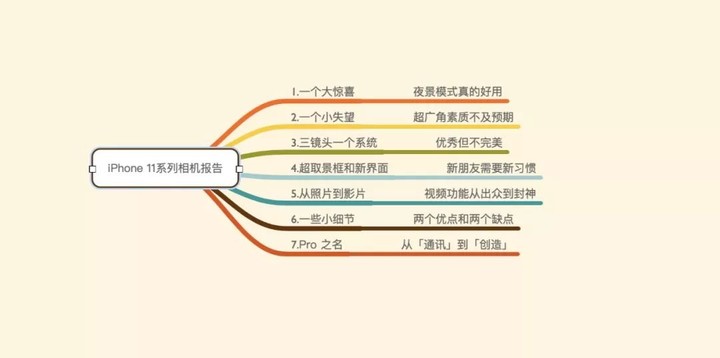
A big surprise
At the end of the conference, the most discussed part of the video is the “night scene mode.” Although a large part of the discussion about the night scene mode itself has nothing to do with the night scene mode, Apple eventually did the night scene mode. My own interest in the night scene mode at the press conference was not the night scene of the city, but the low-light portrait on Keynote.
I still had a bit of confusion at the beginning. The night scene modes of other mobile phone brands generally like to use the city night scene as a case, and rarely use portraits. But Apple is the opposite, it turns out to be a portrait. So after I got started, the first attempt was to use this night scene mode to shoot a super low light portrait in extremely low light. Let’s look at the comparison directly:
▲Use iPhone 11 Pro Max handheld shooting, night scene mode 3S original, photography | Derrick Zhang
I know that when many people see the above picture, the first feeling is the improvement in brightness. But from my shooting experience over the years, the difficulty in shooting in low light conditions is not brightness. Because you want better brightness security can be achieved by improving the light sensitivity and extending the light exposure time (but the drawbacks you also found).
The biggest difficulty is “reduction of color.” You can make an attempt, even if it is a low-light photo taken by a SLR camera, the color will be distorted after increasing the brightness. However, the iPhone’s night scene mode can be described as “amazing” in color reproduction. I don’t need to say more about this matter. You only need to try once to know what I am talking about.
And indeed, the core of the iPhone’s night scene mode is not the pursuit of brightness. Exaggerated brightness enhancement and color reproduction occur only when the brightness in the environment is almost invisible to the naked eye. And if the naked eye is full of light, basically the brightness will not change substantially, but simply restore the color. For example, the following comparison:

▲Use iPhone 11 Pro Max handheld shooting, night scene mode 3S original, photography | Derrick Zhang
It is also because of this reason that the scenes I use the most night scene mode are not so-called urban scenery, but many indoor low-light portraits. At least from my shooting experience, it is really unmatched in color reproduction.
So, I don’t think Apple’s feature is called night scene mode. I think it should be called “low light color mode”. You can try any light that lacks light and contains noise in the captured picture.Turn on the night mode and you’ll get a photo of the purity of the naked eye.
From my perspective, indoor portraits are used most frequently. What ordinary people tend to overlook is that entering the indoors is a typical low-light environment. You will find that the photos taken indoors are significantly different from those in outdoor shooting. So now that you have a night scene mode, this situation will change very fundamentally.
There is also a very noteworthy little detail. According to the principle, the night scene mode is a stack, so if there is shaking during the shooting, the picture will be blurred. This is also the reason why night scene mode is rarely used in portraits, because the model itself will shake or the photographer will fail.
But the result is that in many shots, even if I feel that I have some slight jitter, the picture will appear very sharp. On the contrary, blurring is a rare case, so I can boldly use exposures of about three seconds.
▲Using iPhone 11 Pro Max handheld shooting, night scene mode 3S process has shaken original film, photography | Derrick Zhang
Of course, since it is a night scene mode, you still need to take a night view of the city at night. Interesting is coming:
“If the city night scenes are balanced and the picture is clear and dark, the results of the night scene mode are almost the same as those of the normal mode.”
For example, in the following scene, you will find that the night scene mode and the night scene mode are almost unchanged. This is estimated to be what Apple calls “reducing the real night scene.”
On the other hand, the brightness is actively increased only when the environment itself is very dark. And after the brightening, both purity and color reproduction can basically be consistent with the actual.
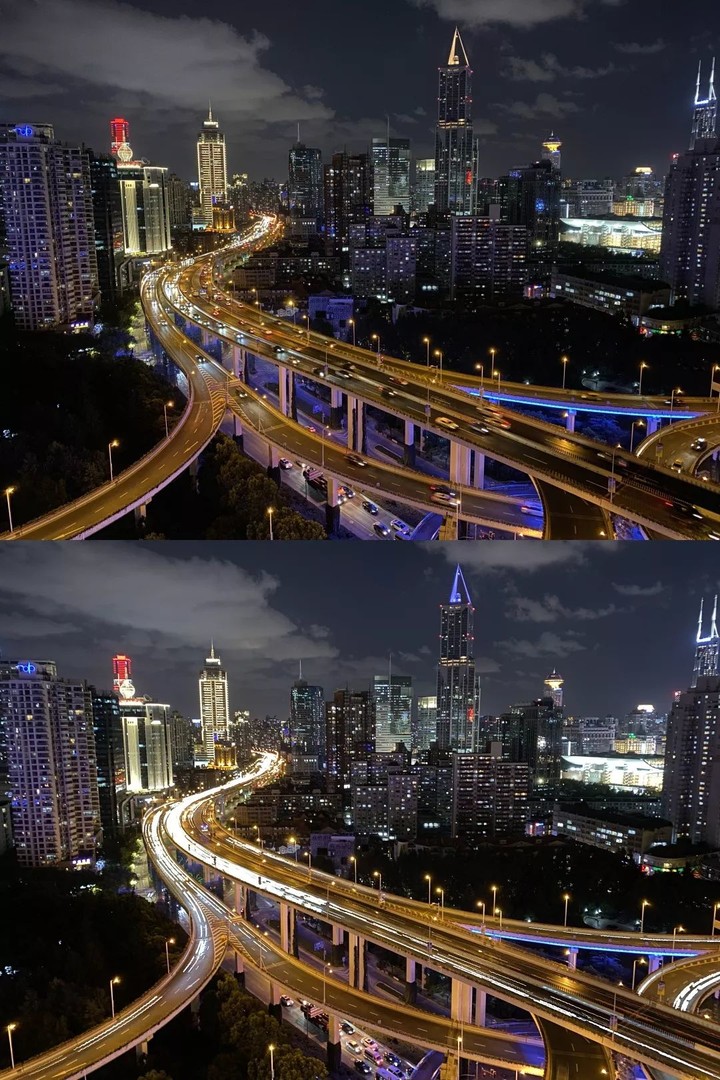
▲Use iPhone 11 Pro Max handheld shooting, night scene mode 3S original, photography | Derrick Zhang
The iPhone night view mode can be turned on automatically, which is fine. The iPhone’s night scene mode can be turned off, which is also very good. However, such a good night scene mode can not be artificially opened. This is my only dissatisfaction with the entire night scene mode, because indeed the ambient light is very weak, so I really hope to open the night scene mode to improve the quality of the photo, but there is no automatic recognition to open.
Of course, I found a way in actual use. This is to click on the “dark part” in the picture to let the iPhone think that I want a brighter photo. At this time, the icon of the general night mode will appear. But I really recommend Apple to add the night scene mode manually in the follow-up update, it is really good.
Night scene mode has two details worth mentioning:
1. The night scene mode can be up to 30S, but only if you need to be on a tripod and the environment is dark enough. 30S If there are stars in the sky, you can still take a good photo of the stars.

▲Use the iPhone 11 Pro Max for tripod shooting, night scene mode 28S with built-in black and white filter, photography, post | Derrick ZhAng
2. Although it can be exposed for up to 30S, the actual exposure time is actually 1S. In other words, in theory, the so-called 30S long exposure is at most 30 1S instead of 1 30S. This is also the longest exposure time for third-party APIs, as compared to the previous iPhone exposure time limit of 1/4S.
A little disappointment
One extra wide-angle lens, nothing new, so everyone is concerned about what kind of super wide angle Apple can pick up. There are a lot of rumors about this super wide angle before the release, and the more rumors, the more we expect from this super wide angle.
But this is why, let’s have some small disappointments after actually using the super wide-angle lens. Of course, if you want to say a conclusion, then:
This super wide angle on the iPhone is basically a passing level compared to the other two lenses. However, this is the only super wide-angle lens we use to pass on all mobile phones (taking into account the 13mm wide field of view).
▲Use the iPhone 11 Pro Max to shoot, super wide angle original, photography | Jamie-hua
For many people who may feel that the problem is super-wide-angle, the quality of the edges, dispersion, distortion, and so on. Indeed, from a camera lens perspective, these are the core elements of a super wide-angle lens. But what’s interesting is that on these elements, the super wide-angle performance of the iPhone 11 (Pro Max) is actually quite good. The problem arises in a problem that should not occur for super wide angles. This is:
Into the amount of light.
When using ultra-wide angle shooting, as long as there is a low light environmentThere will be significant loss of image quality. Not only is the noise serious, but there are also many obvious vignetting. This problem makes the quality of the entire wide-angle lens and the other two lenses have a significant gap (there is actually an implicit message in this sentence, we will talk about it later).

▲Use the iPhone 11 Pro Max to shoot, super wide-angle original film, photography | Derrick Zhang
We were actually very confused at first, because from our experience:
“The longer the focal length, the higher the amount of light will be added”
In other words, according to the experience wide-angle lens is the least amount of light that should not be enough. But the answer to this question was unveiled by photographer Austin Mann’s specific table of three lenses for iPhone 11:

In this table above, we focus Focus on the final aperture parameters. If you are a professional photographer, you should know immediately where the problem is (you can skip the paragraph below). But in order to consider more audiences, I simply make an explanation:
Aperture is currently the key parameter to measure the amount of light entering a cell phone lens. The smaller the value, the larger the amount of light, and the larger the amount of light, the better the picture quality. So we can see:
Numerical wide-angle lensHead 1.8 < telephoto lens 2.0 < super wide-angle lens 2.4
Enlarged light on wide-angle lens > Telephoto lens > Ultra wide-angle lens
The conclusion is:
The newly added wide-angle lens will have insufficient light in the low light due to the small aperture, which is the biggest problem of the current wide-angle lens. It is also a small disappointment that we think this time the iPhone 11 series photography performance.
▲ Shooting with iPhone 11 Pro Max, super wide-angle VSCO retouching, photography, late | Jamie-hua
In fact, the super wide-angle lens is an angle that is difficult for ordinary people to control. Even in traditional photography, there are few photographers who use a super wide angle of about 13mm. I have used the old frog’s 12mm super wide angle. I can say that I want to control a lot of practice, but I really need to have a certain understanding of photography.
But the super wide angle is really unique.
▲Use the iPhone 11 Pro Max to shoot, super wide-angle VSCO retouching, photography, post | Jamie-hua
We can see super wide angleIt can make us a lot of ordinary pictures that seem normal. Exaggerated visual effects and ample picture content are essential points to understand. If you want to learn the relevant knowledge, you can pay attention to our social network, such as the public number (direct search).
Three lenses are indeed a system
Apple has been emphasizing that the three lenses on the new iPhone are a system. I also spent a lot of time at the press conference to adjust the silky zoom experience. So what is the result?
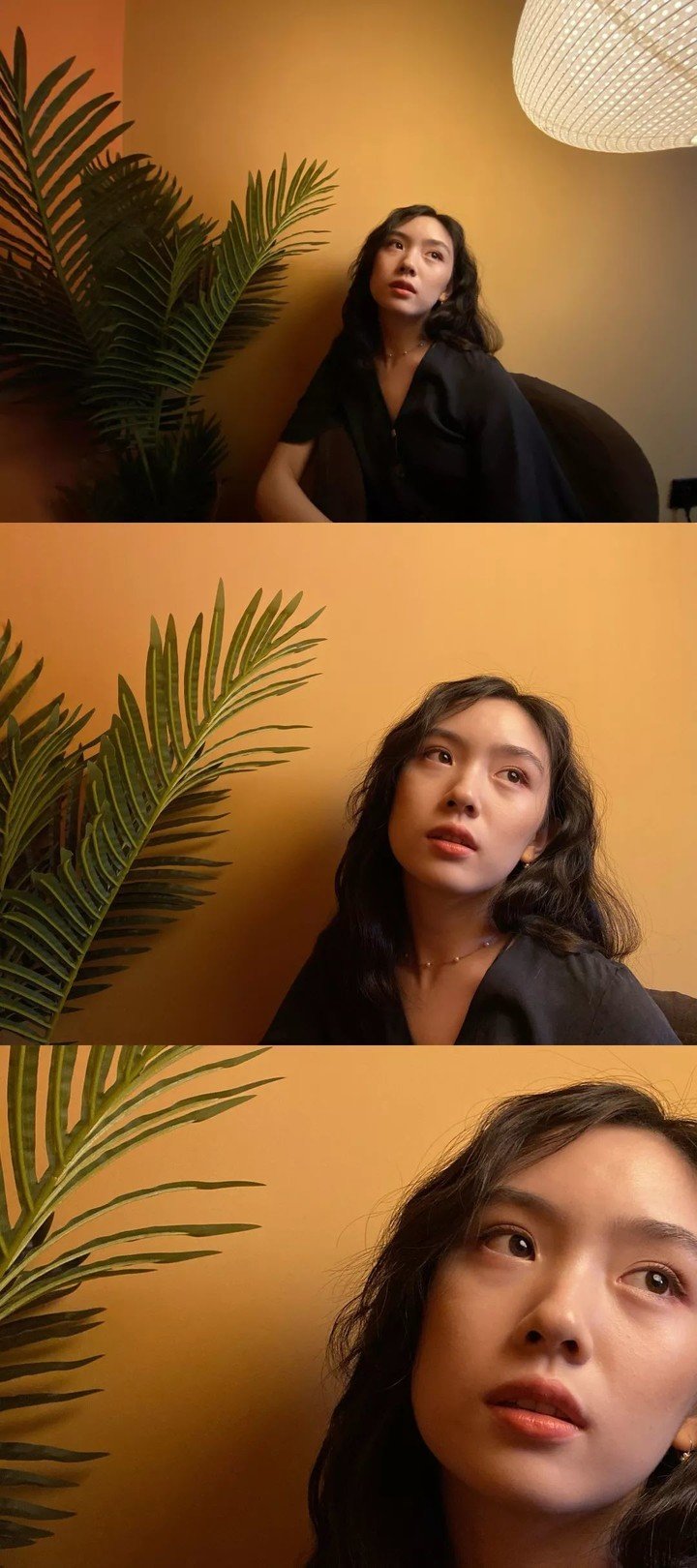
▲Use the iPhone 11 Pro Max to shoot for super wide-angle, wide-angle, telephoto, original film, photography | Derrick Zhang
We still don’t sell off, put the actual conclusions in front:
If Apple’s publicity is 100 points, then 75 points can be used in actual use. What’s interesting is that the 25-point problem that was deducted still appeared on the front super wide angle.
Yes, or super wide angle.
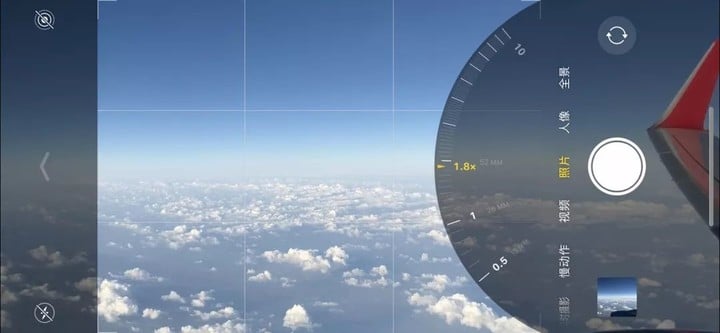
▲New iPhone 11 Series Zoom System
When zooming, you want to deceive the user’s eyes and make the user look like a shot is shooting, there is a core key:
“At any time, the quality of the three lenses is the same”
But, as we said earlier, the super wide-angle image quality has a very significant drop in low light. So if we switch to wide angle using super wide angle in low light environment, you will obviously find that the image quality has a progressive process.
Of course, distance is also an aspect. If you shoot the sceneThe object is relatively close, so the change between the three lenses is also obvious (the difference in viewing angle is large). In other words, you want to achieve the seamless zoom mentioned in the conference. Your premise is that “there is a certain distance between the light and the subject.”
This is why we scored 75 points, because most of the scenes in life, as long as you don’t deliberately stare at it, there is no problem.
So after leaving the 25 points deduction, this is indeed an “excellent three-shot system.”
Apple has always had its own ideas for mobile photography, and many of its features are based on the concept itself. Yes, the third wide-angle lens is not the first Apple to do. If you really want to pursue this thing, who is the first to do it, it may have been a few years ago, without any controversy. So Apple is now launching a super wide-angle lens to become the first echelon, which is what it should do.
But in addition, Apple has done a consistent experience with three lenses. At this point, basically doing is already leading a position. Not only did I listen to a lot of mobile photographers around me, but some photographers who were involved in mobile phone sample shooting complained about the difference between super wide-angle lens, wide-angle lens and telephoto lens on other mobile phones.
In most cases, in the same scene, the three lenses of other brands can even take three photos of completely different colors. This is unbearable for the creative photographer, and even if it is a daily friend circle, it affects the mood.
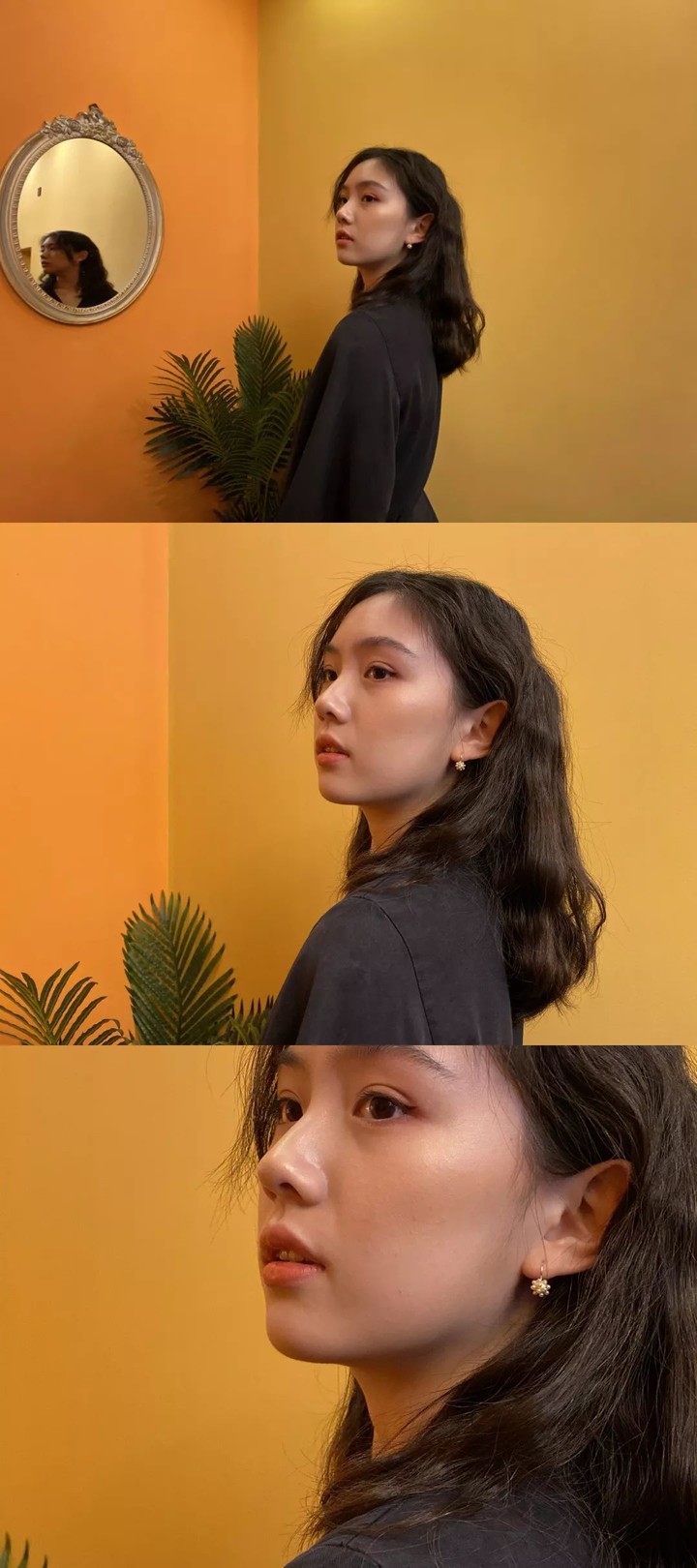
▲The color of the three original photos is almost identical.
The good news is that although the super-wide-angle image quality in the low light is only a hindrance, the color consistency is basically the same. Most of the time, this is the case. Only when a few rays are complicated, a certain deviation will occur in the super wide angle. But really a few, I shot more than a thousand, and a few are deviating.
But it’s more rare than shooting is live view. We all know that Apple has always been committed to the consistency of the framing and shooting results. This is also the “core reason” that many professional photographers like to shoot with the iPhone. Because for the mobile phone, the look and feel of the viewfinder directly affects your creative experience, and your framing and composition are based on this. At present, the frame of the other mobile phones and the actual shooting results are still very different, and it is basically difficult to achieve what you see.The gain, let alone the color of the real scene, is the same. And it seems that many mobile phone brands don’t care about this, nor do they act as an optimization direction.
The article reads here, let’s talk about the hidden information mentioned earlier.
When it comes to the three-shot experience, we have been talking about how the super wide-angle is, but in the past, when we double-camera, we all know that the quality of the telephoto lens is not as good as the normal wide-angle lens. . Therefore, according to common sense, telephoto will also drag the legs. But we didn’t mention it at all because:
The iPhone 11 Pro Max’s telephoto performance is excellent, and the progress is obvious, even reaching the same level as the normal wide angle.

▲Use the iPhone 11 Pro Max to shoot, telephoto to shoot originals, photography, post | Derrick Zhang
This makes us very surprised when we use it. Because in the past, we used telephoto is very cautious. As long as the light is slightly weaker, we will not use telephoto. But now, as long as the wide-angle can shoot light, the telephoto is basically no problem. This was not mentioned at all at the press conference.
So we checked the parameters of the telephoto lens on the official website, and we know that the aperture of this telephoto lens came to f2, which is 40% higher than the previous generation. This is also a fundamental reason for the overall quality improvement of telephoto. And from my own experience, the pleasure of telephoto lens quality improvement is even more than the ultra wide-angle lens.
Super frame and new camera interface
Before talking about the super frame. I think there is something more worth mentioning, that is, after so many years, the interface and operational logic of the iPhone camera have an essential change for the first time.
In my eyes, there is no more friendly and easy-to-use phone than the iPhone’s camera interface. For comparison, I used to shoot a Samsung mobile phone. I can hardly imagine why Samsung has to put such a multi-function directly into the camera. Many times, these irrelevant buttons affect my operation of the camera.
As the opposite, the iPhone’s camera interface has always been a model of restraint.The features you can use must be used quickly, and features you won’t use will not take up the location.
But with the emergence of night scene mode, you now need a very prominent location of the icon and interface, so:
“The iPhone 11 series camera starts to see the secondary function menu”

▲The normal interface and the secondary menu interface are open
In the past, all camera interface features of the iPhone were on the first level of the interface. Each function can be clicked directly. But now there is a big arrow above the camera interface. This arrow is telling you that you can appear in the secondary menu by sliding up.
But what I want to say is that this arrow is still a bit too big, very affecting the overall interface look and feel, not very refined. However, considering the purpose of educating users, it is understandable that the arrow may be removed after several subsequent updates.
After the second level menu appears, there will be flashlights, night scene mode (appearing when triggered), live photo, photo ratio, time delay self-timer and filter (this specific function is different depending on your shooting). Mode, here is the most commonly used photo mode, if there are other modes, there will be corresponding functions). What is worth mentioning here is the proportion of this photo.
We know that there were only two choices in the past, one is normal 4:3, and the other is square. For me, these two ratios are enough. And the iPhone has been used to the camera logic for so many years.
As for more scales, basically the editing function of the album will be used. But now the iPhone removes the square that has been used for so many years, embeds it into the secondary menu, and adds a 16:9 ratio.
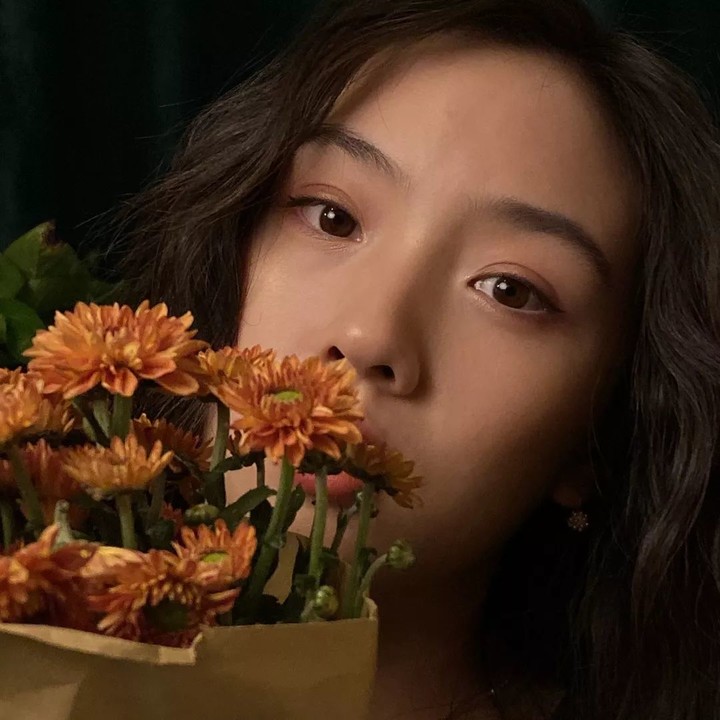
▲Shooting with iPhone 11 Pro Max, built-in cropping, untoned, photography | Derrick Zhang
Say it out, you may not believe it. This is the biggest obstacle I have ever had with my new phone. The square composition itself is derived from social networks, such as the Ins we know. And one of the big benefits of squares is that it simplifies the picture, so many times I subconsciously use the right-sliding square to shoot. Therefore, when I get a new mobile phone, I sometimes slide it subconsciously. After sliding for a long time, I will remember it. It has not been. Then realize that it has changed now and will slide up into the proportional selection.
The problem that can be solved by right-sliding now is “need to slide up, click the function key” and then “click the scale” to select, which is not conducive to fast shooting. But there is also good news, the new iPhone also has a new photo ratio built in, which is 16:9.
This thing I know a lot of users have been calling for a long time, if you are this part of the user, then you can finally use it very happy now. But for me, the screen scale change like this is more likely to be done later. Because once you are in the early stage, you will regret it when you want more pictures in the later stage. Therefore, in the early stage, it is guaranteed to obtain more pixels, and the selection of the screen ratio in the later stage is the most correct choice.

▲The iOS 13 built-in adjustment software now offers a very rich selection of options
But since this has changed, I especially hope that the iPhone can give a regret. In fact, according to the consistent style of the iPhone camera, if you can restore the proportion in the album, so that more pixels can be retained is the most perfect. Since there are chips that can drive two cameras at the same time, it is not a problem to keep more pixels.
Of course, the most obvious change is the concept of the super frame. First of all, this feature benefits from two hardware advancements:
1. With the addition of a super wide-angle lens, this lens allows us to take a wider picture.
2. A13’s powerful performance allows the new iPhone to run two cameras simultaneously.
Based on the above two points, there is now a so-called “super frame”, that is, when we use a wide-angle lens, there will be a translucent area on both sides of the normal frame, and this area can help us understand More framing content.
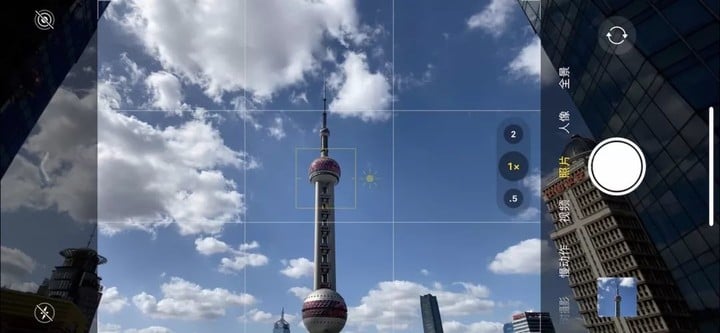
▲The translucent area on both sides of the screen is the super frame
First of all, this change must be adapted. Because indeed, the translucent area often interferes with our normal composition. We need to pay some attention to determine where the boundaries are. But after getting used to it, the benefits of this framing frame will slowly show up. It can be used as an important reference for your framing, especially in the composition.
On the other hand, I believe that many photographers who like human photography must have a feeling of deja vu. If you have used some rangefinder cameras, you will find that this is a similarity. What the rangefinder camera actually sees is not the shooting, and the frame in the framing frame is. The biggest advantage of doing this is to prejudge that you have a rough judgment before the character enters the picture.
It is conceivable that this feature is of great benefit to photographers who like human street shooting. I once stated the philosophy pursued by two iPhone cameras in the iPhone camera concept:
1. When adding a camera function, the iPhone will definitely find the corresponding function point on the real camera;
2. The iPhone camera is still constantly pursuing an instant capture.
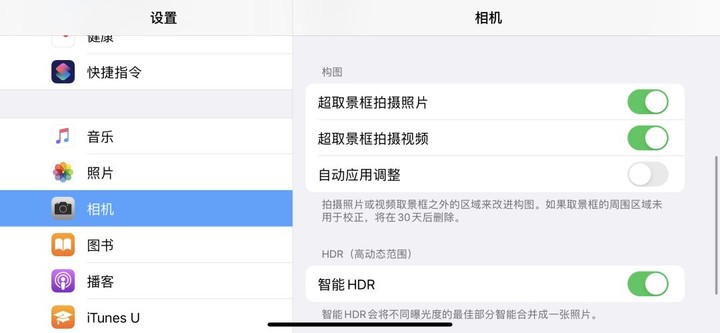
▲Overtake frame capture can be turned on or off in camera settings
The above two new super-frames are there.A true embodiment, the function is to imitate the rangefinder camera, the idea is still easier to capture and retain the moment.
Yes, I highly recommend that you turn on the “Super Frame” in the camera settings. This way, you can have more space in the later trimming. But this “regret medicine” has a 30-day period.
From photo to video
We may discuss whether it is the number one in terms of photos after the iPhone is released. But the video should be no controversy. At present, the iPhone camera’s video does not have any gimmick function, delay, slow motion, and 4K 60 FPS can be used to create.
The most worth mentioning is 4K 60 FPS. This feature that has appeared since the iPhone X has been leading the Android camp for more than two years. Until this year, Android mobile phones gradually began to appear 4K 60 FPS ( This is not to say that the iPhone is the first one, but rather relative to Android as a whole.)
In fact, wanting to do a good video is more difficult than a photo. Because video has an important core point:
“Stability”
I often see some short films on the iPhone on some social networks. At this time, there are often many people commenting below:
“So good photographers, scenes, other phones can be”
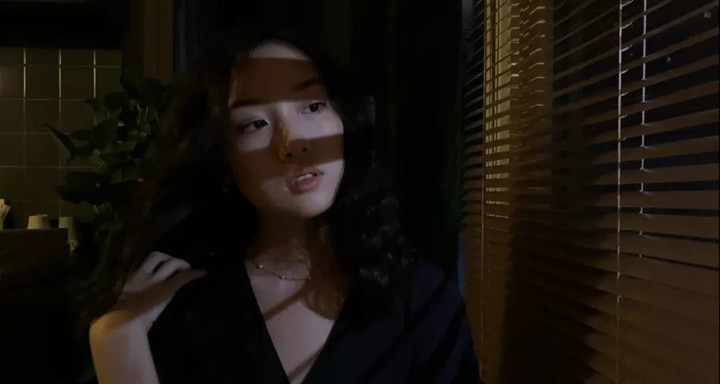
▲iPhone 11 Pro Max low light environment 4K video screenshot
In fact, I think the more professional people, the more you should know that Android phones are really not available at present. I have used a lot of Android phones, the video parameters look very beautiful, but in actual use you will find that the parameters are on the one hand, stability is really not good.
Either the exposure is more convulsive, and in some scenes where the light is larger, the exposure is too unnatural. Either the color temperature is relatively gusty. You will find that the video pats colors from yellow to blue, from blue to yellow.
And if it’s a photo, we can use the post method for a single proofreading for the above question, but if it is a video because it is evenContinued dynamics, then means that any change material can not be used. So this is why we are talking about the root cause of the iPhone’s video capabilities.
And although this year’s value is still 4K 60 FPS, this year’s 4K 60 FPS is completely different from previous iPhones. Because the previous 4K 60FPS does not support high dynamic range.
And the iPhone 11 series supports high dynamic range, how powerful is this high dynamic range. I shot a sunset on the rooftop. Here’s a screenshot:

▲iPhone 11 shooting 4K video screenshots
We can see that not only the high light is suppressed, but also the light in the dark part is very rich in detail, which is very delicate on my iMac 5K. I didn’t lie to me on Keynote at the press conference.
The overall picture quality is basically the same as the photo. Ultra-wide-angle video has a very exaggerated expressiveness when there is plenty of light, but the low-light environment will have some shortcomings.
But the wide angle and telephoto are excellent. Already compared to the previous generation, there has been an essential improvement. Especially telephoto video is completely ready to use the creative environment.
Of course, it is worth mentioning that it is necessary to preview the four positions at the same time, and the two positions are recorded at the same time. To a small point, this is a “fairy machine” for many Vloggers.
And this is a capability that none of the cameras have. Even the best camera, you can only record one scene at a time, but now you can record your own appearance and also record what happened at the scene. If this function can be used well, it can not only generate a lot of creative lenses, but also greatly save the creation time. Before we had to take a picture of what happened on the scene, we went back and explained it, but now the two can be done at the same time.
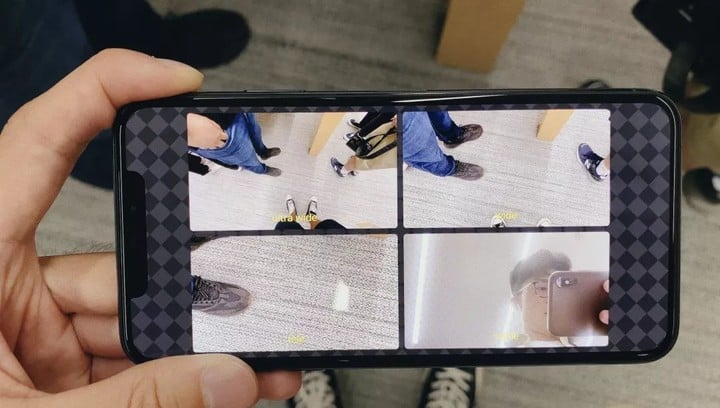
▲ Four shots are previewed simultaneously
Yes, this time the front lens has made remarkable progress. On the one hand, because of the wider field of vision, the basic “framing is too small, it is not easy to narrative (large face)” problem, on the other hand, 4K 60FPS can also Let you rest assured that the material of the front lens is added to your own film without worrying about the quality.
Too big to say, if you want to use the iPhone to shoot a serious film, such as a documentary interview, you can get both a vision and a medium shot (close-up view). Even if you like, you can shoot two characters in the conversation. You can get two scenes at a time to switch between the scenes in the later stage. Can display the content of the creation in a more comprehensive way.
Thought so much, no matter what level of video creation you want to get, the current iPhone has not only led a position in the field of “mobile phones”, but even by “recording two lenses at the same time”. The unique advantage has its own characteristics in the choice of sports cameras and cameras.
Some small details
Of course, in addition to the big chunks mentioned above, we have some small details, first two advantages:
1. Previously, the iPhone dual lens solution was wide-angle + telephoto, and the portrait mode was based on telephoto. It is equivalent to the “portrait” of the standard focal length of the camera about 52mm. However, due to the addition of the super wide angle, it is possible to take a normal wide-angle portrait, that is, an “environmental portrait” of about 26 mm. Therefore, in the case of the iPhone 11 Pro series, the portrait mode can be both portrait and environmental portraits. And because of the improvement of the telephoto quality, the portrait mode quality has also improved.
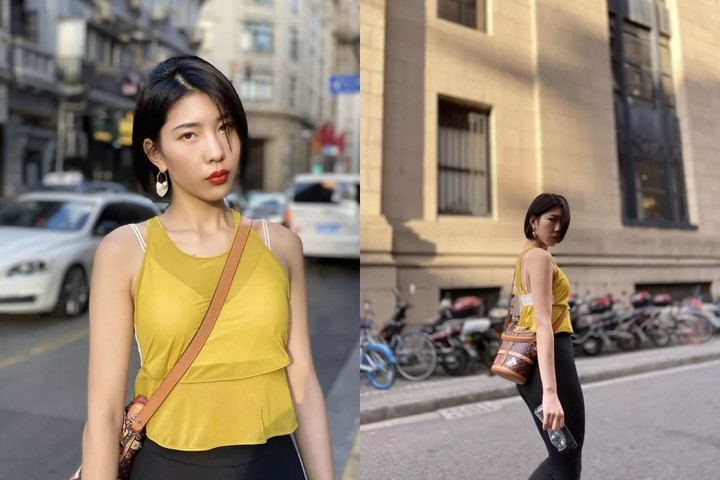
▲Photographed with iPhone 11 Pro Max, left: portrait; right: environmental portrait, photography | Jamie-hua
2.iPhone 11 due to the addition of super wide angle. The two lenses can contain depth of field information, so the current iPhone 11 can be used not only in portrait mode but also in “cat portrait mode”, ieSay that both pets and still life can be filmed.
Two more shortcomings, or a bug:
1. The intelligent HDR effect of the wide-angle lens is not good. Many times, the smart HDR effect is not triggered at all. We need to manually tap the screen to make a selection. This is especially true in some large light ratio environments.

▲Photographed with iPhone 11 Pro Max, some highlights in the sky are not pressed, photography | Jamie-hua
2. 4K video When the positive light source is being shot, the color temperature will be significantly blue. This phenomenon is completely absent during normal shooting, and it is very obvious when looking directly at the sunset lens (system version 13.0).
Pro’s name
From my perspective, the iPhone 11 Pro name is bad. I really don’t know why I want a name like this. Not to mention the average consumer, even a writer who has long been concerned about technology information needs to take the time to adapt to the “iPhone 11 Pro Max” series of names. What’s even more embarrassing is that when I was introduced to ordinary people, in most cases it was foggy:
Why are you talking about iPhone 11 or iPhone 11 Max, why is there a Pro, is it three phones?
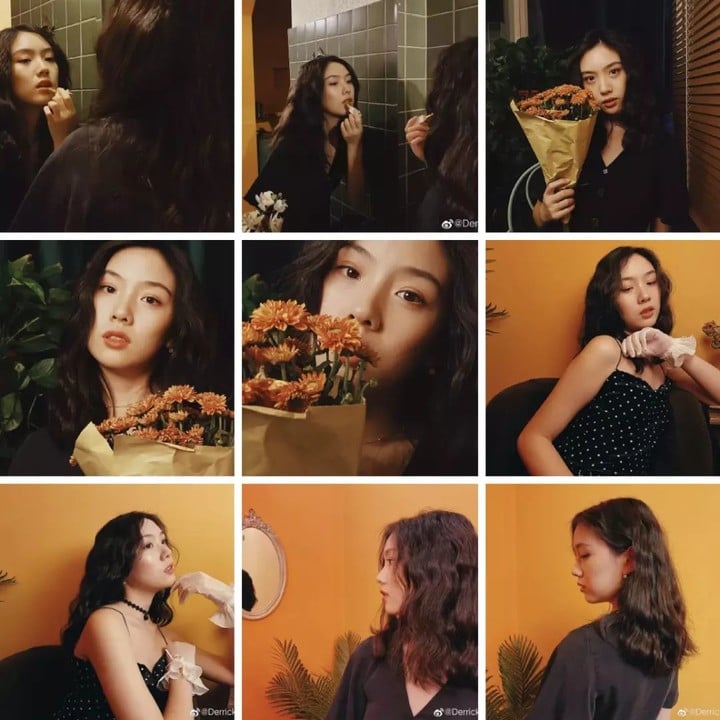
▲Photographed by iPhone 11 Pro Max Portrait, Photography | Derrick Zhang
So why does this “Pro” exist?
For a long time, the iPhone has always been a communication tool. But with the internetWith the evolution of the ecological environment, the iPhone has begun to carry a strong creative attribute. Previously this kind of creation was just a photo, but now it has come to the video. More and more people are no longer satisfied with the simple record of life, they began to hope to share life. Vibrating sounds, B station, more and more video content has been completed by mobile phones.
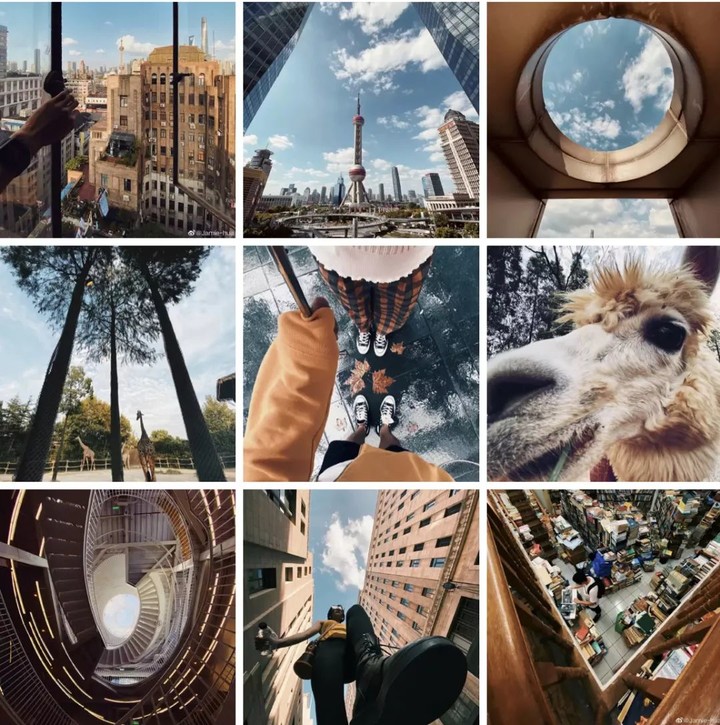
▲ by the iPhone 11 series super wide-angle shooting, photography, late | Jamie-hua
Many people think that the iPhone Pro is very naive, because Pro’s video practitioners don’t use the iPhone to eat, which is completely correct. Because in my opinion, the so-called “Pro” here is not used by “Pro” people, but ordinary people who are not “Pro” can create like “Pro”.
In the past 5-10 years, the iPhone and a group of smart phones have changed the fate of photos and photography. Now it has come to the “film” and seems to be “increasing.”
“Give People Wonderful tools,And They’ll do Wonderful Things.”